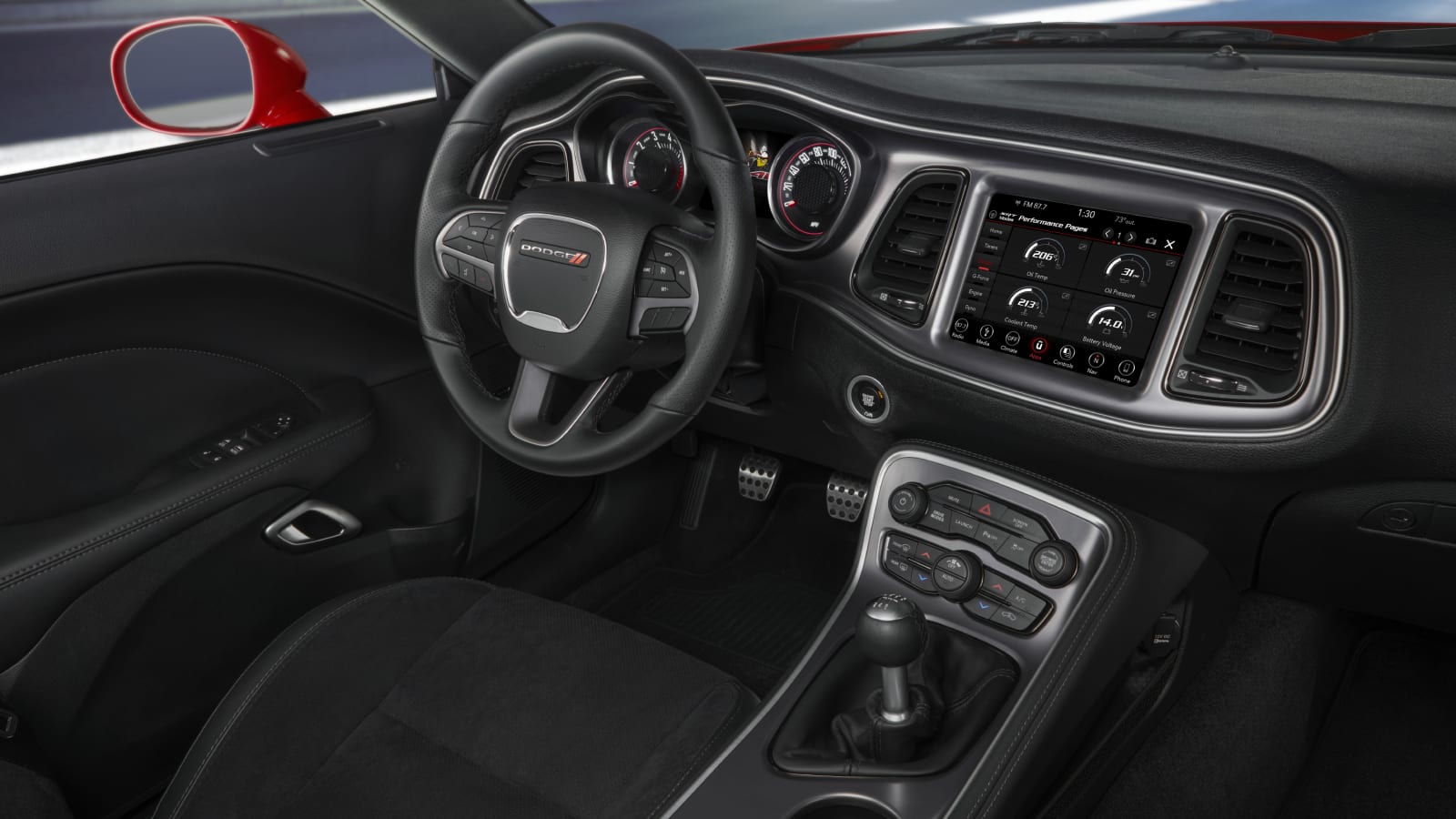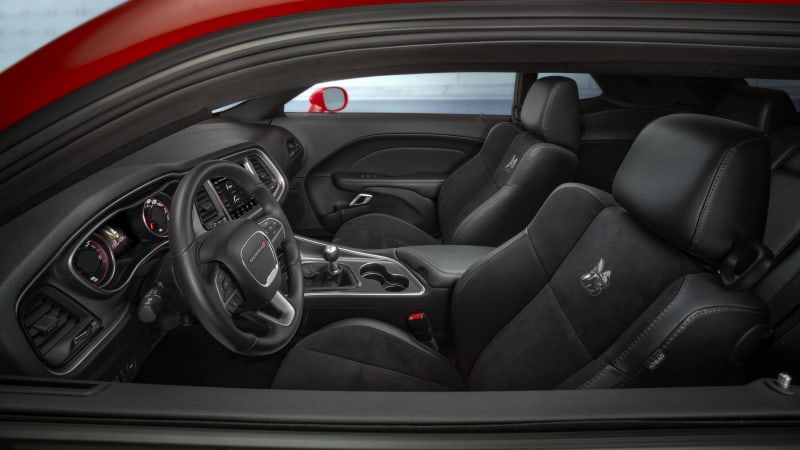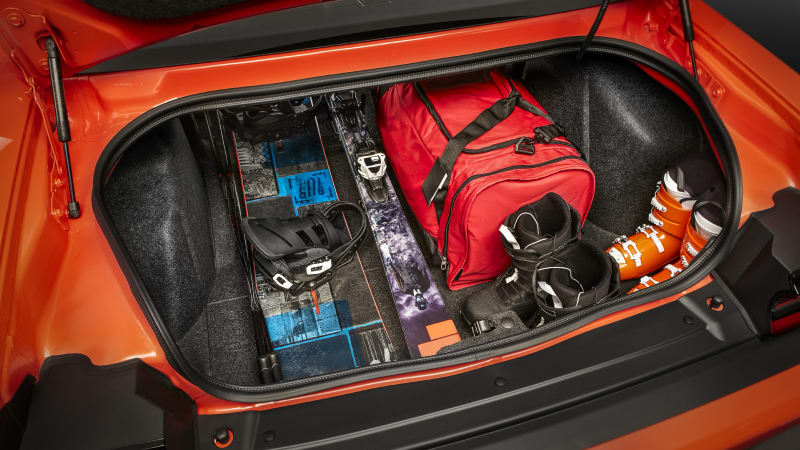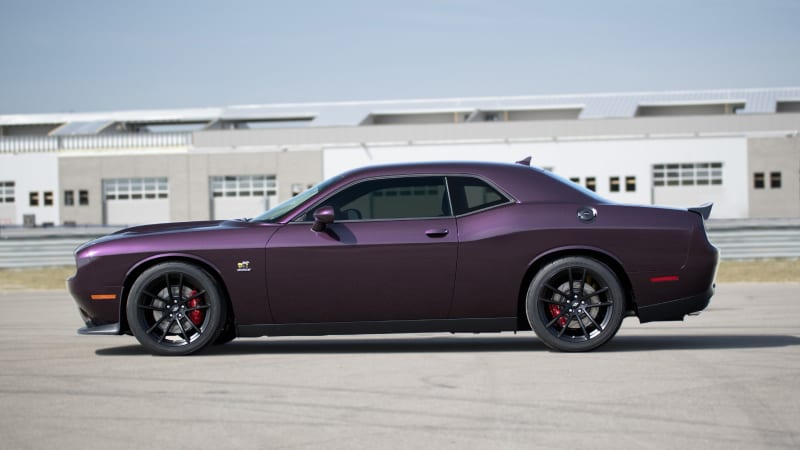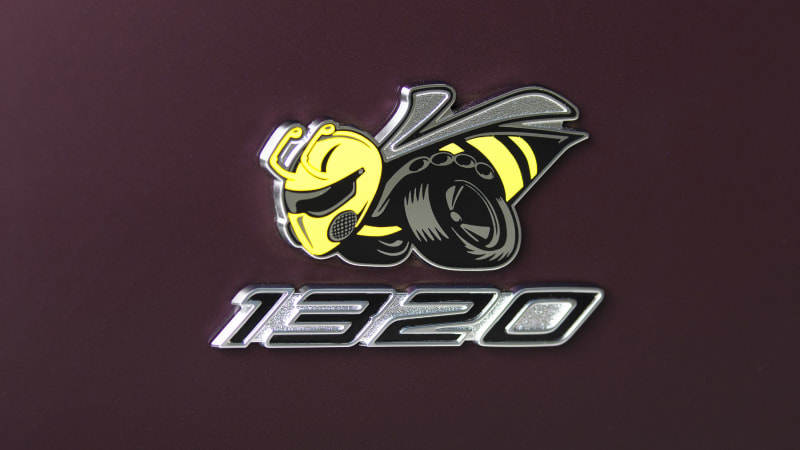The Energizer Bunny’s got nothing on the Dodge Challenger. It just keeps going and going and going without a major redesign, turning the calendar over each year with new colors (this year it’s Gold Rush!) and trickling down elements from top-dog performance models to lesser versions to create new variants (hello R/T Scat Pack Shaker Widebody!). The end result is a 2021 Dodge Challenger that is both hopelessly out of date, yet still one of the coolest cars on the road. Maybe it’s because it’s so honest – it’s OK being an old-school muscle car, not a modern sport coupe. Maybe it’s because it doesn’t take itself so seriously with all those bold colors like Hellraisin and Sinamon Stick. Maybe it’s because people like huge fenders, scoops poking out of the hood and, oh yes, a 717-horsepower supercharged V8 screaming away while the tires roast.
So yes, the Challenger is awesome and we dig it. We also must recognize that it is hopelessly out of date, with a platform that dates back to either the late 2000s or the late 1990s depending on how you want to look at it. The only significant changes occurred for 2015 with slight styling tweaks and a new interior, meaning its mid-cycle refresh happened longer ago than the entire lifespans of most car generations. As a result, that once-new interior is now quite old, the Challenger’s safety credentials aren’t great, the engines are incredibly powerful but crude and inefficient, and if you’re interested in handling, it’s probably best to stick with a Mustang or Camaro. Basically, you’re buying a brand-new old car … and that’s not necessarily a bad thing.
What’s new for 2021?
The Widebody package makes its way down to the R/T Scat Pack Shaker and T/A 392, bringing the number of Challenger variants to 17. Maybe? Seriously, it’s really hard to keep them straight. Anyway, to the glorious array of colors already available on the Challenger comes Gold Rush for 2021.
What’s the Challenger interior and in-car technology like?
The Challenger’s interior certainly isn’t as characterful and flamboyant as its exterior would suggest. The Mustang and Camaro are more interesting and distinctive inside. Still, there are some interesting design flourishes that spruce things up, from the base trim’s standard houndstooth cloth to the two-tone leather choices available as options. Besides, we’re not sure how flamboyant you need the interior to be in a car available in gold, orange and purple paint colors.
Furthermore, what the Challenger interior may lack in visual pizzazz, it makes up for with space (see below) and technology. A 7-inch touchscreen is standard, but all trim levels have an 8.4-inch version available as an option or standard. Both are among the easiest to use in the industry, and we prefer the 8.4-inch unit in particular to what’s offered by the Camaro and Mustang. Heck, the Ford doesn’t even come standard with a touchscreen, let alone the Apple CarPlay and Android Auto that are included on every Challenger.
How big is the Challenger?
For a performance coupe, the Challenger is enormous. It’s nearly 9 inches longer than a Camaro or Mustang; 3 or 4 inches taller, respectively; and its wheelbase is 6 or 9 inches longer. The most basic Challenger SXT weighs 400 pounds more than a V6 Camaro. While that size is definitely a detriment to the Challenger’s handling and straight-line performance, it’s a boon for interior space and everyday functionality. Unlike in the Mustang and Camaro, actual adults can fit comfortably in the Challenger’s back seat, while its 16.2-cubic-foot trunk would be big for a midsize sedan. The Camaro’s is nearly half the size and it’s opening is awkward. As such, it’s much easier to justify buying a Challenger to be a daily driver (or convincing your significant other that, “Oh yeah, the kids can totally come along in it!”)
What are the Challenger fuel economy and performance specs?
Buckle up, this is going to take a while. Even the base engine Challenger provides decent performance with a 3.6-liter V6 in the SXT and GT that produces 305 hp and 268 pound-feet of torque. You can expect a zero-to-60 time in the low-6-second range, which is pretty quick, but ultimately pokier than the four-cylinder Camaro and Mustang. An eight-speed automatic and rear-wheel drive are standard, but you can add all-wheel drive – the only engine so offered. Fuel economy is 19 mpg city, 30 mpg highway and 23 mpg combined, which honestly isn’t that bad. It drops to 18/27/21 with AWD, and it’s just downhill from there.
Next up is the 5.7-liter V8 found in the Challenger R/T good for 372 hp and 400 lb-ft of torque with the standard eight-speed automatic. It goes up to 375 hp and 410 lb-ft with the optional six-speed manual, which seems like a pretty great reason to get a three-pedal car. Fuel economy is 19 mpg combined with the automatic and 18 mpg combined with the manual. This engine basically shaves a second off the 0-60 time.
The R/T Scat Pack model has a 6.4-liter V8 good for 485 hp and 475 lb-ft of torque regardless of whether you get the automatic or manual. Fuel economy is 18 mpg (auto) or 17 mpg (manual). Again, you’ll be knocking another second off the 0-60 time, which should be in the low 4’s. (For those really interested in taking their Scat Pack to a drag strip, the 1320 package pictured below adds several mechanical upgrades and subtracts weight for improved quarter-mile times).
Now for the heavy artillery. The Hellcat gets a supercharged 6.2-liter V8 good for an absurd 717 hp and 656 lb-ft of torque. It can be paired with the automatic or manual, and if you’re asking about fuel economy, you shouldn’t be considering a Hellcat. Its 0-60 time is likely only a few tenths of a second quicker than the Scat Pack, but that says more about the limits of rear-wheel-drive grip. Don’t worry, the Hellcat feels like it has an extra 232 horses.
Finally we have the Hellcat Redeye, which is effectively a detuned version of the one-year-only Demon. Its version of the Hellcat engine produces 797 hp and 707 lb-ft of torque. Its 0-60 time should be 3.4 seconds, according to Dodge, while the quarter-mile should disappear in 10.8 seconds.


